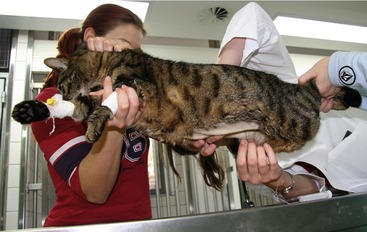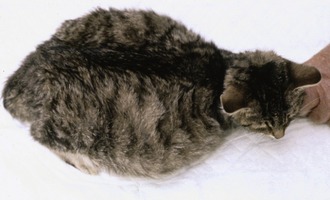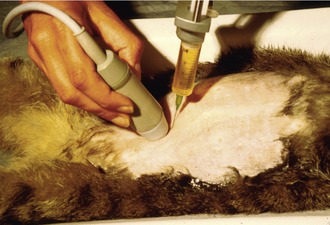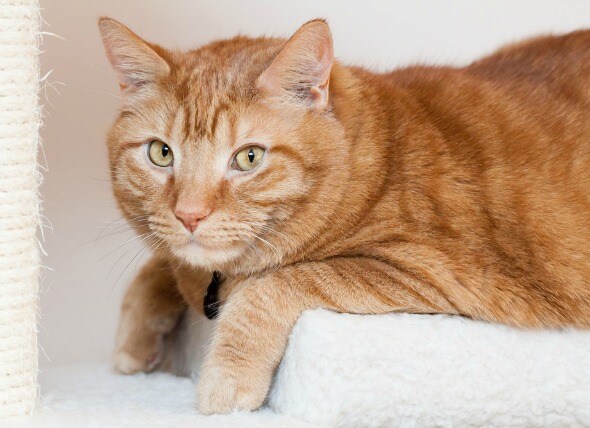Septic Ascites In Cats
Eighteen dogs and 12 cats with peritoneal effusion. 1 vasculitis is another potential cause of fluid accumulation in abdominal and thoracic body cavities.

Diagnosis And Treatment Of Feline Infectious Peritonitis Veterian Key
A swollen stomach is one of the most obvious symptoms of ascites in cats, but any dramatic shift in appetite, weight, body temperature, excremental function or physical sensitivity during a belly rub might indicate excess abdominal fluid in cats, or ascites in cats.

Septic ascites in cats. Spontaneous bacterial peritonitis (sbp) is a bacterial infection in the peritoneum commonly seen in the setting of cirrhosis and ascites. Although extensive research into therapy for fip is currently underway, fip is still not treatable and cats invariably succumb to the disorder. Usually, the build up of fluid is a gradual process.
In less severe cases, fluid can be palpated between the intestinal loops. Anytime the liver or kidneys fail or rupture the fluid they release into the cat’s abdomen can quickly become septic. In cats with ascites, an abdominal swelling is commonly noticed.
It is also important to remember that some dogs with sepsis may not show all the classic signs. Fluctuation and a fluid wave may be present; While a swollen stomach is one of the most obvious signs of ascites, any dramatic shift in a cat’s appetite, weight, body temperature, excremental function or sudden sensitivity during a tummy rub can also be warning signs.
There are many reasons for kidney and liver failure, such as infections, ingesting toxic chemicals or poison, heat stroke, or dysfunctions of the cat’s metabolism. Acute diffuse bacterial peritonitis may cause pyrexia, depression, pain, sometimes vomiting and will progress to septic shock with tachycardia and hypovolemia. Increases in capillary hydrostatic pressure resulting from intravenous fluid overload or reduced cardiac output may occasionally be severe enough to induce ascites, although pulmonary edema is often the predominant clinical sign particularly in cats.
Ruptured intestines (typically from intestinal cancer or a linear foreign body obstruction secondary to ingested string) pyothorax (a pus infection in the chest cavity) kidney infection (pyelonephritis) severely infected wound (e.g., abscess or bite wound) feline infectious peritonitis (fip) rare causes for septic shock in cats. Cats of any age are susceptible, although young cats are more commonly affected. Usually the result of bacterial peritoneal contamination.
Ph, bicarbonate, electrolyte, lactate, and glucose concentrations were measured on 1. The fluid accumulating into the abdomen will come from blood vessels, abdominal masses or internal organs. Ascites has many causes, most of which can be very serious.
Ascites in cats is a condition characterized by the accumulation of fluid in the abdomen, and can vary in severity. While a swollen stomach is one of the most obvious signs of ascites, any dramatic shift in a cat’s appetite, weight, body temperature, excremental function or sudden sensitivity during a tummy rub can also be warning signs. To establish a reliable diagnostic tool for septic peritonitis in dogs and cats using ph, bicarbonate, lactate, and glucose concentrations in peritoneal fluid and venous blood.
Common causes for septic shock in cats include: This presentation focuses on diseases causing abdominal distension or effusion in dogs and cats and is aimed at assisting the practitioner to develop an approach to diagnosis and treatment. We performed a literature review of all.
The therapeutic intervention also provides your first diagnostic test. Hypotension is common in cats and can be difficult to treat. While a swollen stomach is one of the most obvious signs of ascites, any dramatic shift in a cat’s appetite, weight, body temperature, excremental function or sudden sensitivity during a tummy rub can also be warning signs.
Cats presenting with pleural effusion are nearly always in respiratory distress, ranging from an increased respiratory rate and effort to open mouth breathing. In cats, ascites is caused by the leakage of fluid into the abdomen from blood vessels, lymphatics, internal organs or abdominal masses. Palpation, radiography, ultrasonography and abdominocentesis.
In the latter situations, therapeutic intervention must be initiated quickly to prevent respiratory arrest. Severe liver disease can also cause ascites in cats. Pasteurella is an organism typically associated with skin and soft tissue infections secondary to bites or scratches from domestic animals.
Another cause of ascites in cats, feline infectious peritonitis — or fip — is caused by a virus that thrives in. Interestingly, septic cats are rarely hyperdynamic, and typically display characteristics of hypodynamic state (pale mucous membranes, hypotension, cold extremities). Abdominal masses can sometimes be palpated, reflecting omental and visceral adhesions or enlarged mesenteric lymph nodes.

Pin On Health Safety
Ascites In Cats - Cat Tales

Ascites In Cats Fluid In The Abdomen - Cat-world

Abdominal Cavity Inflammation In Cats Petmd
2
Ascites In Cats - Cat Tales

Effusive Form Of Feline Infectious Peritonitis Showing The Huge Amount Download Scientific Diagram

Ascites In Cats Fluid In The Abdomen - Cat-world

Diagnosis And Treatment Of Feline Infectious Peritonitis Veterian Key

Understanding Ascites In Cats - Tufts Catnip
2

Ascites In Cats - Cat Tales

Pin On Medical Procedures

Diagnosis And Treatment Of Feline Infectious Peritonitis Veterian Key
2

Pin On Liver And Panceras
2

Pin On Vet Student Survival Universities And Necessary Humor

Fluid In Abdomen In Cats Petmd